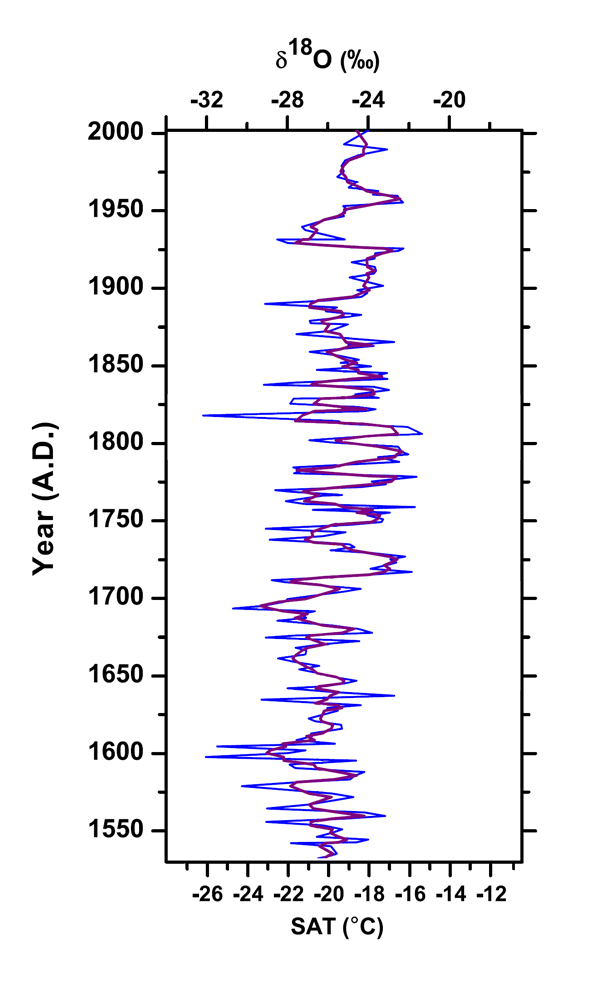Reference
Thamban, M., Laluraj, C.M., Naik, S.S. and Chaturvedi, A. 2011. Reconstruction of Antarctic climate change using ice core proxy records from coastal Dronning Maud Land, East Antarctica. Journal of the Geological Society of India 78: 19-29.
What was done
Working with an ice core (IND-22/B4) that had been extracted during the austral summer of 2003 from the coastal region of Dronning Maud Land, East Antarctica (70°51.3'S, 11°32.2'E) -- which activity was part of the 22nd Indian Antarctic Expedition -- the authors developed 470-year histories of δ18O and δD that "showed similar down core fluctuations with [an] excellent positive relationship (R2 = 0.9; n = 216) between the two." And based on a δ18O vs. surface air temperature (SAT) relationship developed for this region by Naik et al. (2001), they derived the regional temperature history depicted below.

Figure 1. Surface air temperature (SAT) as derived from δ18O data vs. time in years AD. Adapted from Thamban et al. (2011).
What was learned
In the words of the four Indian researchers, "the estimated surface air temperature at the core site revealed a significant warming of 2.7°C with a warming of ~0.6°C per century for the past 470 years."
What it means
Climate alarmists have long predicted that CO2-induced global warming -- which they claim has (1) accelerated significantly over the course of the 20th century and is (2) unprecedented with respect to the past millennium or more -- should be (3) greatly amplified in earth's polar regions. However, Thamban et al.'s results clearly indicate that all three of these climate-alarmist claims are false in regard to this portion of the planet's southern polar region.
Reference
Naik, S.S., Thamban, M., Laluraj, C.M., Redkar, B.L. and Chaturvedi, A. 2001. A century of climate variability in central Dronning Maud Land, East Antarctica, and its relation to Southern Annual Mode and El Nino Southern Oscillation. Journal of Geophysical Research 115: 10.1029/2009JD013268.




